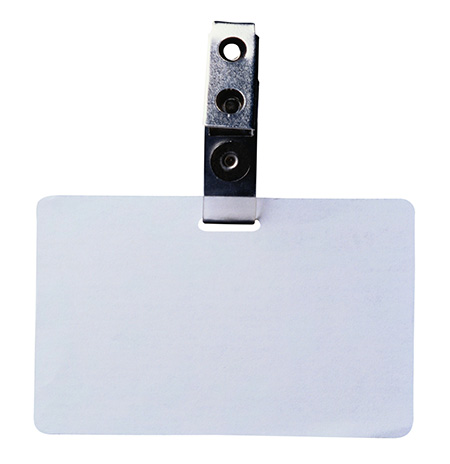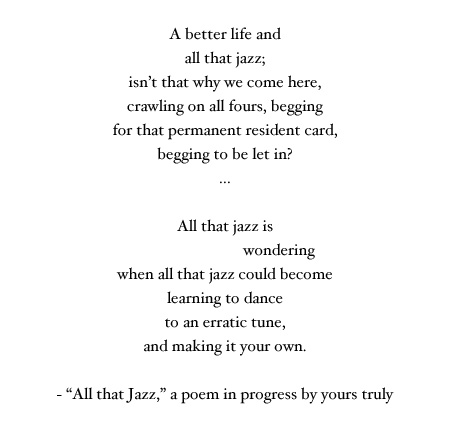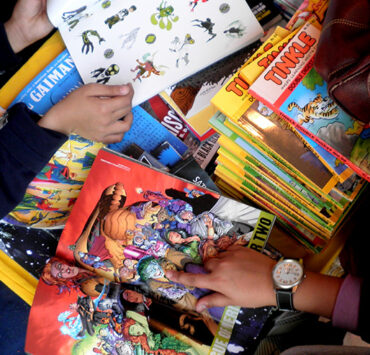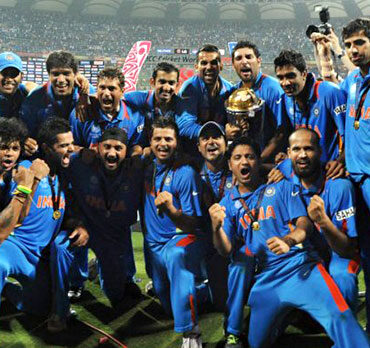Every time I think about who I am and where I belong to, I always come up with a big, fat hyphen. On one side of the hyphen, it says Indian, and on the other side, Canadian. Yes, that’s my label: Indo-Canadian.
Labels are not easy to live with, especially hyphenated labels. There is a sense of disorientation when it comes to choosing one side or the other. There never is only one side. Parts of me are fragments of Indian-ness and Canadian-ness, with no clear lines that distinguish the two. I have to live a perpetual balancing act, careful to negotiate my space on this hyphen.

Labels are not easy to live with.
Imagine this. You are at a social function [in Canada]. You meet somebody new. And you get asked:
“Where are you from?”
“Canada”
“No, where are you really from?”
For me, it’s easy to point to my origins, being an immigrant myself. But I have a friend who was born and brought up here, whose parents were migrants from Pakistan, but who has never, ever in his life stepped outside of the borders of Canada. He cannot speak Hindi/Urdu, speaks with a thick Canadian accent, and indulges into all of the normal “Canadian” guy activities. Of course, he won’t watch baseball, but that’s just him.
It’s tricky, though, to decide which activities are strictly Canadian, and which are not. What/who is Canadian? Canada is an amalgamation of countless different cultures. To be Canadian, is not to be “white Caucasian”. In fact, Russell Peters’s proclamation that “white Canadians” are a minority is probably true! No, no. What Canada really is is a “tossed salad,” with its July 1st (Canada Day) and O’Canada (national anthem). If you haven’t realised how problematic that image is, let me point it out. Even tossed salads have distinguishable borders.
So, yes, I understand, that it makes it easier (for you) to pin down a label onto someone you have just met. It’s easy to say, “oh, so-and-so is a South Indian, so she must be a vegetarian, or so-and-so is Russian, so he must love vodka!” But even with simple labels, there are problems. Some people contend themselves with a broad term, like immigrants, or South Asians. Both are like brand names that signify a separate category. Immigrant signifies newness or, the perpetual “other”. While South Asian signifies a marginal community; again, the “other”. Do you see how there is a tendency to separate “Canadians” from the mainstream by the virtue of their (our) labels?
And, what about those who have multiple identities? Like Canadian author, M. G. Vassanji, who is an Indian who lived in Kenya and now lives here in Canada. Or, Kwai Yun Li (author of The Palm Leaf Fan and other stories), who was a Chinese born in India, and then moved to Canada. How do we categorise them? Or should we even attempt?
There’s more to somebody than where they are from, and belongingness cannot be narrowed down to one area or place. Take me for example: I am from India, and I have lived in Dubai for nine years, and recently I became a Canadian citizen. I am not just Indian or Canadian. I am not completely any one of these things, because there is more to who I am and what I identify with. My cultural identity cannot be pinned down to a category or label. Labels are after all static; while one’s cultural identity is dynamic. It’s ever changing.

Let us again imagine a conversation I had with X. X represents all those people I came across over time (and still do) in Canada:
“From Calcutta? You are Bengali, right? So, you must love fish!”
Yes, I am a Bengali from Calcutta, but much of Calcutta is made up of non-Bengalis. Also, I don’t love fish, although I grew up eating it.
“You people love sweets!”
No, I don’t possess a sweet tooth.
“Rabindra sangeet?”
Puts me to sleep.
This imaginary conversation can go on, but why bother? All the stereotypes will fall flat on their faces.
What I want to point out is, our hyphenated labelled existences are expected. We are expected to respond positively to these kinds of annoying and ignorant statements.
How shall I put it? I am… me. I am able to sing the Indian National anthem without a fault, while I still fumble on “O Canada…”. Yet, I feel more comfortable on Queen Street in Toronto than at Chowringhee in Calcutta. So, what does that make me?
But don’t misunderstand me. I am not confused. I know who I am. But, I don’t see why I have to explain who I am to a stranger I just met. My identity is my own.
Let’s start over. Hi, I am Sanchari. I belong to me. What about you?








